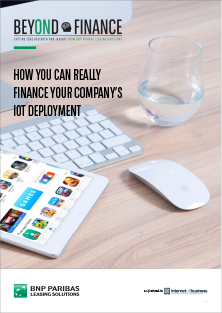The benefits of software finance
The principal benefit of software finance is, unsurprisingly, cost. Enterprise software can be prohibitively expensive for a small business, but it can also bring a significant competitive advantage. A company that uses accounting software is usually better equipped to manage its finances than a company that relies on Excel spreadsheets, but benefiting from these programs will often require some kind of initial outlay. If they can’t afford it, they can’t take advantage of it.
By spreading payments across monthly or quarterly instalments, it’s easier to pay for the licenses they need without compromising on quality with a lesser or older version of the software. The reseller can also allow them to consolidate add-ons and other costs within one predictable payment plan – making the expense easier to digest and manage. If the business needs to upgrade or scale, the lease can be amended to meet their evolving requirements.
Similarly, companies sometimes buy applications without fully considering the issue of compatibility: if a program doesn’t complement its existing setup, it can be hard to get the most out of it. A leasing agreement can be tailored to the exact needs of the customer and include both tangible and intangible assets: if they require a computer with a more powerful processor to run their suite of accounting applications, it can be included in the deal; if they require support with IT infrastructure, telecommunications, cloud storage, or anything else, it can also be arranged.
Software leasing is also well-suited to changes in requirements as businesses scale and their needs grow or change. If a business’ original agreement is for 10-15 software licenses, securing more can often be an unnecessarily troublesome task. Businesses are often given a choice to either stick with what they have or pay the excessive costs of upgrading to the next tier. With software finance, it’s much easier for an end-user to upscale to their specific needs.
It’s also easy to avoid the problem of built-in obsolescence that comes with software and hardware alike. Leasing IT equipment allows businesses to keep pace with advances, iterations, and upgrades: at the end of an 18 month contract, the end-user can pay for a newer, more sophisticated tool or application on comparable terms. This means they never have to worry about their equipment or their software becoming slow or ineffective over the long term as they’re seldom very far from a high-quality replacement. Given the pace of development, particularly with software, this is an important consideration for businesses that need access to state of the art technology to keep up with the competition.
For businesses, the opportunities provided by finance are valuable indeed. IT setups are often complicated and specific to each individual organisation: figuratively speaking, businesses often find themselves buying square pegs. Fixing the ‘round holes’ will often require assistance with training, installation, and routine support.
With finance, these soft costs are wrapped up into the original contract. This simplifies the process of integrating software into operations, accounts for possible contingencies, and ultimately costs less for the end-user.
SaaS vs finance?
One argument against leasing is that, with the rise of Software as a Service (SaaS), which offers applications on a pay-monthly subscription basis, leasing and other forms of finance are effectively redundant.
But the idea that SaaS and software finance are somehow opposed is flawed. They are in fact perfectly complementary – and SaaS has, in many ways, boosted the case for software finance.
In the consumer sphere, entertainment as a service platforms like Netflix and Spotify have popularised the idea of accessing content rather than owning it. Instead of building a collection of physical media on outdated formats, you can simply pay a small flat monthly fee and receive access to more entertainment than you could ever store. In the B2B sphere, SaaS solutions like Xero and Salesforce offer comprehensive financial management and business development services for a regular monthly payment.
SaaS is great for businesses if they want ‘off the shelf’ software, however leasing can offer fully bespoke software solutions which incorporate soft costs such as training, installation and maintenance. These costs can end up being quite high and if the business has not planned for them they may have to tap into their lines of credit or draw on valuable cash reserves. With finance, businesses can also opt for custom-built solutions that wrap up the cost of an entire IT solution including software, hardware and soft costs into a predictable regular payment, enabling businesses to plan for the future more effectively.
This isn’t to say that leasing is perfect for every application or organisation. Any financial agreement should be looked over by an accountant and weighed against a company’s business model. But if companies require the best software, at a convenient, manageable cost, they should look to fund their tangible assets the same way they fund their intangible assets.





